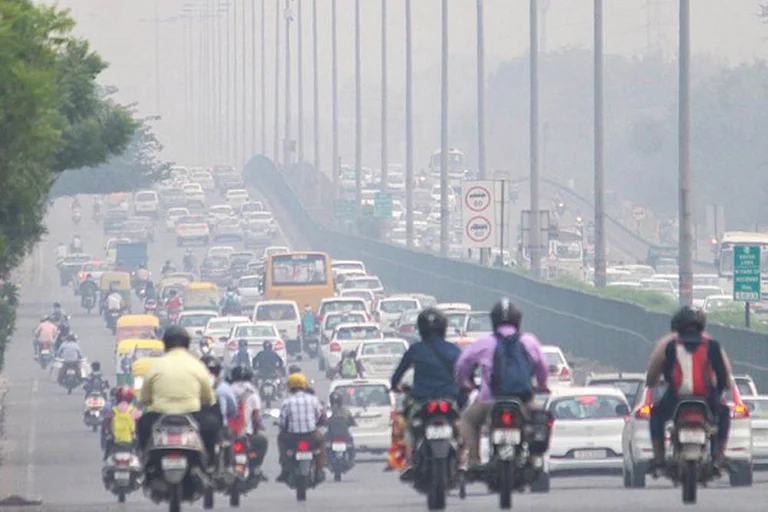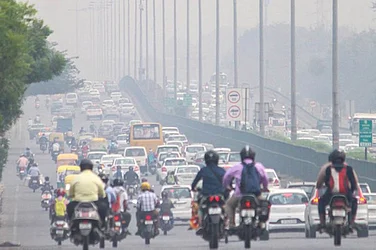The idea of ‘witch hunting’ generally conjures up images of a barbaric society where superstition, blind faith and black magic serve to explain tragedies and losses. That such practices are still found in regional pockets evokes a mix of disbelief and outrage. Broadly speaking, witch hunting refers to accusations of possessing supernatural powers made with the intention of harassing and demonising the demographic of largely older and middle-aged women. Even as the practice is associated more with tribal communities, studies show its prevalence across communities within rural and marginalised regions. Although a wide spectrum of acts ranging from verbal abuse to murder may manifest as part of witch hunting, it is cases of egregious violence that tend to make headlines and lead to demands for strict state intervention.
Repeatedly, calls by concerned organisations and individuals have, in fact, culminated in the enactment of a slew of special laws in as many as eight Indian states. Of these, the special laws enacted in the states of Bihar (1999), Jharkhand (2001), Chhattisgarh (2005), Odisha (2013), Rajasthan (2015) and Assam (2018) are specific to witch-hunting alone. Two broader legislations to prevent ‘human sacrifice, black magic and evil practices’, within which witch hunting is also covered, were enacted in Maharashtra (2013) and Karnataka (2017).
Yet, witch hunting persists. In the face of its continued prevalence, the goalpost has shifted to the demand for a national law. Without consideration of the evidence which shows how existing laws function, such calls seem like cosmetic attempts at addressing a problem which may be begging for other responses.
Let us take a close look at similar provisions under the six special laws. In these laws, a ‘witch’ is a person targeted by others for having supernatural powers, although she makes no such claims herself. Labelling or identifying someone a witch is a crime, as is the harassment consequent upon labelling a person as such. Likewise, the ‘curing’ of a person labelled a witch through the alleged use of supernatural powers through jhadphook, totka, tantra mantra (types of exorcism) by a person who self-identifies as a witch doctor, locally called ojha, gunia, and tantric is also an offence. In signalling these acts as serious offences within regions where they occur, the special laws aid pre-emptive police action, and counter cultural belief systems.
Therefore, without covering the entire gamut of offences which accompany witch hunting, the special laws target a few offences unique to witch hunting. All offences specified are low threshold violations which, but for these laws, would be culturally normalised. These offences attract small sentences but are cognisable so as to prompt immediate police action and arrests with a view to pre-empt the escalation of violence. Where the targeting escalates, the provisions in the India Penal Code (IPC) apply, in conjunction with the special laws. Importantly, in states that have no special laws as well, the penal code serves the purpose of the law.
A review of laws requires looking not just at the relevance of its statutory provisions but also at its implementation. It is instructive, in this context, to look at the insights from a multi-tiered study of the interplay between the special law and penal code, with a range of witch hunting violations (Agrawal and Mehra, ‘Contemporary Practices of Witch Hunting: A Report on Social Trends and Interface with the Law’ Partners for Law in Development: 2014). This MWCD-sponsored study took into consideration qualitative accounts of the experiences of witch hunting, the responsiveness of the law and the relationship between the special laws and the penal code in the three states where the special laws on witch hunting were first enacted. Carried out in Bilaspur and Janjgir-Champa (Chhattisgarh), Jamui (Bihar) and Ranchi (Jharkhand), the data comprised of qualitative interviews with 48 victims ,all but two of whom were middle-aged or older women who endured targeting; 85 police records based on FIRs at the block level registered between 2010-2012 from the same districts; and 59 reported judgments of the High Court and Supreme Court pertaining to witch-hunting/ witchcraft from pre-1947 to 2012.
The study found that the victimised women are mostly self-reliant, independent, successful and vocal women, who have distinguished themselves within their familial and local contexts and are known for their material gains through a varied set of sources (including land, cultivation, harvest, cattle, anganwadi job or even marriage to a well-off widower). Interestingly, most perpetrators were from the extended family of the women, and, in some cases, neighbours. The targeting therefore served to resolve broad social and material conflicts, settle scores and restore status quo in terms of land, social rank, loss of cattle and children by an unexplained illness.
More significantly, the forms of targeting include a range of practices including a gradation of assaults, sometimes building up gradually and, at other times, suddenly. These manifested as name- calling, rumour-mongering, public insults, abuses, scuffles and ostracism through narratives that demonise victims as evil. Such assaults led to restrictions on the women and ultimately, enforcing the exclusion of women from public spaces, resources and social relations. It was also common to find victims being forced to leave their village for extended periods of time and, in severe cases, being permanently displaced. Such social and economic boycott debilitates and, ultimately, impoverishes the victim and her immediate family members, who were often collateral victims. It is important to note that these forms of targeting are often overlooked in descriptions of egregious atrocities that have come to define witch hunting in mainstream discourse.
It was also notable that the few victims who did seek assistance from the police and sarpanch (village head), were not always successful. Police records from the block level, on the other hand, were revealing of the kinds of cases that get registered and the laws that are applied. Of the 85 cases, in only six were the offences under the special laws exclusively invoked; the remaining 73 were based on the IPC, along with a mention of the special laws. The special law complaints involved identification as witch, insulting, rumour-mongering, taunts, threats and sometimes physical violence. The offences registered under the IPC, in the FIRs where the general laws were also used, involved causing hurt, rioting, trespass, wrongful restraint, wrongful confinement, grievous hurt, threat to life, attempt to murder, among others.
The two sets of data tell us that in the functioning of the law, low threshold targeting does not get registered by the police and there is scarcely evidence of pre-emptive action exclusively under special laws. It is only when the violence escalates, with mobs breaking into the property of the victim, dragging her out, assaulting her with sticks, rods, firearms and so on, that the state machinery comes into action. The police appear to register cases only when violence assumes a level of gravity which necessitates the provisions of the penal code as well. There is barely any resort to special laws in and of themselves.
The analysis of 59 reported judgements from pre-1947 to 2012 further deepen the insights on how the law works. All of these, without exception, were appeals made by the accused to reverse their conviction in cases of murder and grave violence. Not a single case involves an appeal by the state against an acquittal. This pattern is broadly illustrative of the criminal justice system’s response to violence against the poor and marginalised. Nearly half of the appeals were successful, on account of poor investigation and prosecution, another widespread malaise of the criminal justice system. Judges frequently express dismay and disappointment at the lacunae in investigation and infirmities in prosecution, such as the non-examination of key witnesses on which the prosecution case rests, which leave them with no option but to reverse the conviction.
An analysis of 59 judgements from 10 states, from a time period when only three states had special witch hunting laws, established that homicide, being a serious offence, is prosecuted regardless of the existence of special laws on witch hunting; and even in the absence of a special law, the motive of offence is recorded as witch hunting or human sacrifice. This is reflected even in the NCRB’s data where murder with the motive of witch hunting/witchcraft is recorded, regardless of whether or not the state has a special law. This reinforces the argument that only killings or violence as grave as murder, is what makes a case serious enough to proceed in the criminal justice system.
The repeated demands for laws to prohibit witch hunting must engage with these realities of the criminal justice system and seek solutions that fill these gaps in the protection of those accused as witches. Flat calls for more laws do not advance the cause of legal redress which the victims seek. If pre-emptive action is scarce, what are the interventions necessary to plug this gap? The law provides no remedy for ostracism, forced displacement and resultant impoverishment. Given the protracted nature of the functioning of the criminal justice system and the challenges to successful prosecution, what additional measures might be necessary to restore and rehabilitate victims? Might not compensation and rehabilitation measures independent of conviction be the more desirable direction in which to move? A reparative model of justice rather than calls for more laws, is one that sorely needs attention because such a model could help restore dignity and overcome dislocation and impoverishment of victims. It should be pointed out here that robust compensation models are part of the law in Rajasthan and Assam, and their delivery must be studied for an informed discussion on the subject.
Finally, witch hunting in medieval times, as in contemporary manifestations, is not a result of ignorance and superstition. It is a means of enforcing rank and status within an unequal social and economic order, using a public spectacle of punishment to warn others. Tackling witch hunting cannot, therefore, be limited to punishing individual perpetrators; it also requires addressing the structural drivers that marginalise some groups and create the conditions that enable witch hunting. The absence of relevant education, quality healthcare, public health delivery, timely legal redress and effective policing allow disparities to fester and promote conflict between individuals and groups. Under such conditions, witchcraft becomes a tool for resolving conflicts. The law is a necessary, though partial, response to witch hunting. A holistic approach requires creating governance models based on cultures of gender equality, human rights and development justice. These, along with law, must be part of the efforts to tackle witch hunting.
(This appeared in the print edition as "The Possibilities of Legal Redress")
(Views expressed are personal)
Madhu Mehra is founder and currently head of research and training at partners for law in development, New Delhi





















